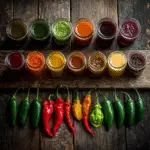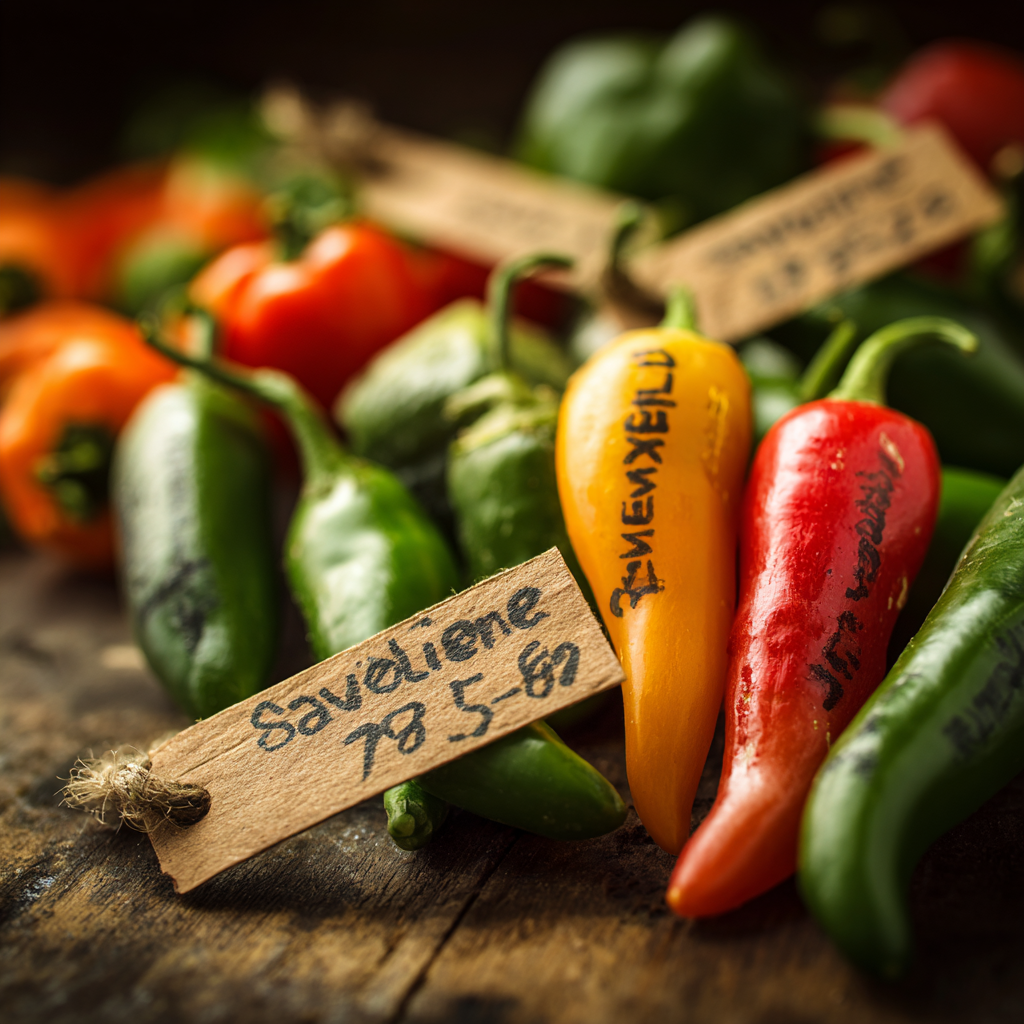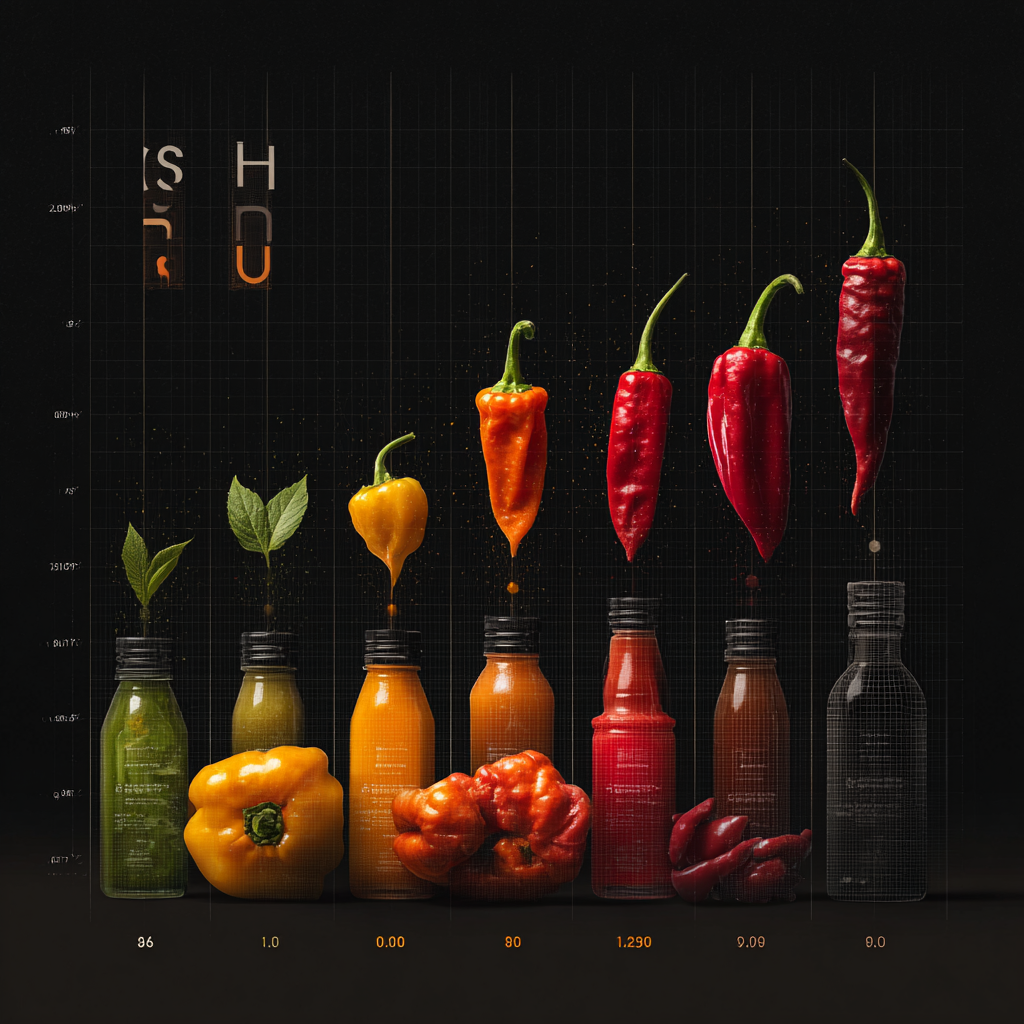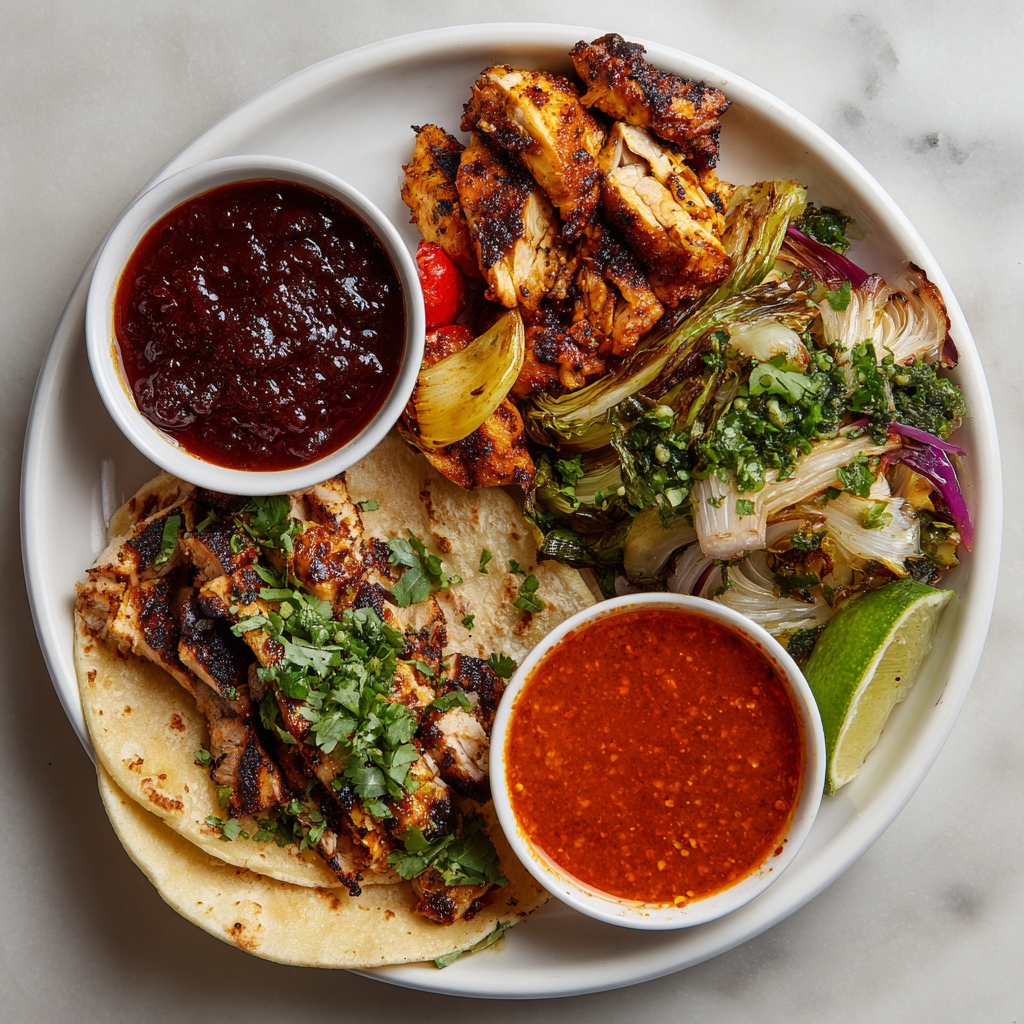Growing up in North Carolina, hot sauce wasn’t just something we splashed on wings—it was practically a love language. I still remember the first time my uncle dared me to taste what he called ‘Dragon Breath’ sauce. I was maybe eleven, and one bite had me gasping for milk like I’d swallowed the sun. That was also the day I heard about the hot sauce Scoville heat scale. It sounded scientific—almost official. I had no clue what it meant at the time, but I knew one thing: it measured pain, and I had just hit the high end.
Today, understanding the hot sauce Scoville heat scale helps more than just curious cooks. Whether you’re reaching for a mild jalapeño blend or dabbling with a sauce that brags about millions of Scoville units, knowing where it lands can save your tastebuds—or ruin your afternoon. This article breaks down how the scale works, what the numbers really mean, and how to use it when picking the right heat for your meals.
If you’ve ever looked at a bottle and asked, “Is this going to hurt?”—you’re in the right place.
Print
Hot Sauce Scoville Heat Scale: What the Numbers Really Mean
- Total Time: 20 minutes
- Yield: 1 cup
- Diet: Vegan
Description
This DIY hot sauce brings medium heat (50,000 SHU) and bold flavor using habaneros, garlic, and vinegar. Perfect for everyday meals.
Ingredients
6 fresh habanero peppers
1 cup white vinegar
2 cloves garlic
1 tsp salt
1 tsp sugar
1/4 cup onion, chopped
Instructions
1. Roughly chop the peppers and remove seeds if desired.
2. Add all ingredients to a saucepan and simmer for 10 minutes.
3. Let cool slightly, then blend until smooth.
4. Strain for a thinner consistency if needed.
5. Pour into sterilized bottle and refrigerate.
Notes
Adjust number of peppers to change SHU level.
Wear gloves when handling hot peppers.
Use within 2 weeks for best flavor.
- Prep Time: 10 minutes
- Cook Time: 10 minutes
- Category: Condiment
- Method: Blending
- Cuisine: American
Table of Contents
From My Pantry to the Pepper Scale
The First Burn: How I Learned About the Scoville Scale
The first time I took a bite of something labeled “ghost pepper hot sauce,” I saw stars. The bottle said 1,000,000 SHU—and like most people, I had no idea what that meant. Turns out, SHU stands for Scoville Heat Units, and it’s the standard used in the hot sauce Scoville heat scale to measure spiciness. The higher the number, the hotter the burn.
The scale was developed in 1912 by pharmacist Wilbur Scoville, who first created it while working on capsaicin-based pain relievers. Instead of just guessing how strong each pepper was, he had volunteers taste increasingly diluted pepper extracts until the heat disappeared. If a pepper had to be diluted 50,000 times before it stopped burning, it measured 50,000 SHU. That method might sound rough—and it was—but it laid the groundwork for the scale we still use today.
Back then, no one was chasing clout with Carolina Reapers or bottles marked “caution: extreme heat.” But Wilbur’s scale gave us a way to talk about spice—and these days, it’s part of the reason sauces come labeled with numbers that make grown adults sweat.
Even simple sauces like my go-to 5-Min Bell Sauce or a homemade crushed tomato sauce can fall somewhere on the Scoville heat scale, depending on what peppers they use.

For more recipes :
Wilbur Scoville’s Spicy Legacy and Why It Still Matters
While the original method was pretty subjective (and more than a little painful), it worked well enough to become a standard. These days, the hot sauce Scoville heat scale is powered by modern science. Labs now use High-Performance Liquid Chromatography (HPLC) to measure the actual amount of capsaicin in a pepper or sauce. From there, it’s converted into SHU numbers without needing any human taste testers to burn their tongues off.
This is how we know jalapeños range from 2,500 to 8,000 SHU, while sauces made from Carolina Reapers can hit over 2 million SHU. And it’s not just about the pepper—the heat level of any sauce depends on soil conditions, ripeness, even how it’s processed. That’s why the same bottle of hot sauce might taste mild one week and ferociously hot the next.
There’s a big difference between a sauce with natural pepper heat and one made with capsaicin extract, which some brands use to push SHU ratings off the charts. We’ll dig into that in the next section—but for now, just know this: if you’re choosing your next condiment based on numbers, the hot sauce Scoville heat scale is your best friend… and sometimes your worst enemy.
How Heat Is Really Measured
SHU Demystified: How Scoville Units Work Today
If you’ve ever stared at a label and seen “50,000 SHU” without a clue what it means, you’re not alone. The hot sauce Scoville heat scale is a number-based system—but that number reflects how much capsaicin (the compound responsible for the burn) is present in the sauce or pepper.
Originally, people like Wilbur Scoville relied on human tasters to rate spiciness. These days, the heat is measured by machines using High-Performance Liquid Chromatography (HPLC). This lab method detects capsaicinoids in parts per million. From there, it calculates Scoville Heat Units (SHU) using a simple formula:
SHU = ppm × 16
So if a sauce has 100 ppm of capsaicinoids, it clocks in at 1,600 SHU. The benefit? Accurate and consistent spice ratings—no human tongue sacrifices needed.
Even with modern testing, pepper heat can still vary. One jalapeño might measure 2,500 SHU, while another reaches 8,000, depending on factors like ripeness, weather, or soil. That’s why SHU is often given as a range, even for store-bought sauces.
It’s helpful when selecting a product like Devour Meals that use peppers in different recipes. You might think you’re getting a mild heat—until you get the batch that kicks like a mule.

Natural Peppers vs. Extract Sauces: Understanding the Real Heat
Here’s where the hot sauce Scoville heat scale gets controversial: not all SHU ratings come from natural sources. Some hot sauces stick to real peppers like cayenne or ghost. Others get their firepower from capsaicin extract, a highly concentrated compound that turns a dash of sauce into a five-alarm fire.
Natural pepper sauces—like those featuring habaneros, jalapeños, or the Carolina Reaper—usually hit between 5,000 to 2.2 million SHU. These sauces balance flavor and fire. Great examples include products listed on the hot sauce spice scale that focus on cooking—not just pain.
Extract sauces, on the other hand, can top 3 million SHU and sometimes advertise up to 16 million SHU (theoretical max). But here’s the thing—they’re more chemistry project than condiment. Often, these are used for food challenges, not tacos.
It’s worth noting that even sauces that blend both sources can punch above their weight. Blair’s Mega Death Sauce, for instance, is rated at 550,000 SHU but tastes way hotter due to extract concentration. That’s the kind of sauce you pull out at a party for the shock value—not for a casual autoimmune paleo meal.
Popular Hot Sauces and Their SHU Ratings
From Tabasco to The Last Dab: Where Famous Sauces Land on the Scale
Ever wondered where your favorite sauces rank on the hot sauce Scoville heat scale? The numbers may surprise you. Some of the most well-known hot sauces aren’t as fiery as you’d expect, while others pack millions of SHU into a tiny drop.
Here’s a quick look at where popular hot sauces land:
| Hot Sauce | Scoville Heat Units (SHU) |
|---|---|
| Frank’s RedHot | 450 SHU |
| Tabasco Original | 2,500–5,000 SHU |
| Cholula | 3,600 SHU |
| Sriracha | 2,200 SHU |
| Da Bomb Beyond Insanity | 135,600 SHU |
| Blair’s Mega Death Sauce | 550,000 SHU |
| The Last Dab (Hot Ones) | 2,000,000+ SHU |
One interesting note: many of these sauces blend real peppers with extract to achieve those extreme numbers. That’s why a sauce like The Last Dab might have fewer ingredients than your homemade crushed tomato sauce but feels like it’s melting your face off.
How Different Heat Levels Feel (and How Long They Last)
Understanding the hot sauce Scoville heat scale isn’t just about numbers—it’s about how that number feels. Two sauces might both be rated at 50,000 SHU, but one may hit instantly while the other builds slowly, catching you off guard.
Here’s a breakdown of common SHU ranges and what they feel like in real life:
| SHU Range | Typical Sensation | Burn Duration |
|---|---|---|
| 0–1,000 SHU | Mild warmth, barely noticeable | 5–10 sec |
| 2,000–5,000 SHU | Noticeable spice, pleasant tingle | 15–30 sec |
| 30,000–50,000 SHU | Sharp, intense heat | 1–3 minutes |
| 100,000+ SHU | Serious burn, sweat, and watery eyes | 5–15+ minutes |
| 1,000,000+ SHU | Overwhelming heat, full body response | 20–45 minutes (or more) |
The experience of these sauces can be affected by what you’re eating them with. For instance, pairing a 5,000 SHU sauce with fatty foods can tame the fire, while adding it to a vinegar-heavy dish can amplify it.
Some people even chase the endorphin rush that comes with high SHU sauces. Others, like those making their own spicy recipes for a healthy Walmart meals guide, stick to manageable heat that won’t cause a food emergency.
Taming the Fire and Using It Right
Tips for Handling, Pairing, and Cooling the Burn
By now, you probably have a decent grip on the hot sauce Scoville heat scale—and maybe even a bottle or two that lives at the top of it. But knowing how to use hot sauce without regretting it? That’s its own kind of art.
Start small. If you’re trying a new sauce—especially anything over 100,000 SHU—use a drop or two at first. You can always add more, but once it’s on your food (or in your mouth), there’s no turning back.
Fat is your friend. Dairy-based sides like sour cream or full-fat yogurt help balance the heat. If you’re adding hot sauce to something already creamy—like autoimmune paleo meals that use avocado or coconut milk—the burn gets mellowed out naturally.
Avoid water. Capsaicin is oil-based, and water just spreads it around. Sip milk, eat bread, or try honey if things get out of hand.
Pair wisely. Tangy hot sauces (like vinegar-based ones) work well on grilled meats and eggs. Sweeter pepper sauces shine with pork or roasted veggies. When making dishes like traditional spaghetti sauce, a few dashes of milder hot sauce can deepen flavor without changing the base.
Understanding the hot sauce Scoville heat scale isn’t just about tolerating pain—it’s about knowing which sauces match your meal and how much heat you really want.
When Heat Crosses the Line: Health Risks, Myths, and Warnings

Despite the popularity of challenge sauces and viral food dares, there are real risks when it comes to extremely spicy foods. The hot sauce Scoville heat scale includes sauces that go over 2 million SHU—levels where discomfort becomes physical stress.
Nausea, vomiting, and stomach cramps are common when someone eats too much of an ultra-hot sauce too fast. Some have even found themselves in the emergency room. If you’re sensitive to spice, or if you have digestive issues, staying under 10,000 SHU might be the smarter play.
There are also a few common myths:
- “High SHU sauces kill taste buds.” Not true. They overwhelm, but the effect is temporary.
- “Water helps cool it down.” It really doesn’t. You’re better off with dairy or starch.
- “Spicy foods cause ulcers.” Capsaicin can irritate existing ulcers but doesn’t cause them. In fact, some studies suggest it may help with digestion in moderate doses.
And for those brave enough to tackle sauces like “The Last Dab” or 100% Pain Hot Sauce (yes, that’s a real product), always check for extracts in the ingredients. Extract-based sauces can hit hard and linger longer, especially if used without dilution.
Frequently Asked Questions
What are the 4 levels of heat sauce?
Most hot sauces fall into four general heat levels based on the hot sauce Scoville heat scale:
Mild (0–2,500 SHU): Great for beginners. Think Frank’s RedHot or mild taco sauces.
Medium (2,500–30,000 SHU): Sauces like Tabasco or Sriracha that add kick without overwhelming.
Hot (30,000–100,000 SHU): Where things get serious—like habanero-based sauces or Da Bomb.
Extreme (100,000+ SHU): These include extract sauces like Blair’s Mega Death or The Last Dab, often over 1 million SHU.
How many Scoville units is Perrona hot sauce?
Perrona hot sauce typically falls between 30,000 and 50,000 SHU, placing it solidly in the hot category on the hot sauce Scoville heat scale. It’s made with red chili peppers and vinegar, making it flavorful but not unbearable for most seasoned spice lovers.
Is 50,000 Scoville a lot?
Yes, 50,000 SHU is considered hot. It’s enough to cause a burning sensation, sweating, and possibly a run for milk—especially if you’re not used to spicy foods. On the hot sauce Scoville heat scale, this is the range where sauces start to get uncomfortable for the average person.
How hot is 100% Pain hot sauce?
100% Pain Hot Sauce measures around 40,600 SHU. While it’s not among the hottest out there, the name isn’t lying—it delivers a serious kick. On the hot sauce Scoville heat scale, it’s definitely in the “Hot” category and not for the faint of heart.
Conclusion
Whether you’re a curious beginner or someone who adds hot sauce to everything—even pancakes—the hot sauce Scoville heat scale is a reliable way to understand what you’re getting into. It’s not just about heat; it’s about matching the right sauce to your food, your tolerance, and your taste.

Remember, a sauce doesn’t have to hit a million SHU to be good. Some of the best hot sauces bring balance, flavor, and a little fire without turning every bite into a dare. Now that you know how to read the scale, how to use it in the kitchen, and what those crazy SHU numbers really mean, you’re officially sauce-smart.
So go ahead—explore, taste, and maybe cry just a little. The fire’s worth it.

